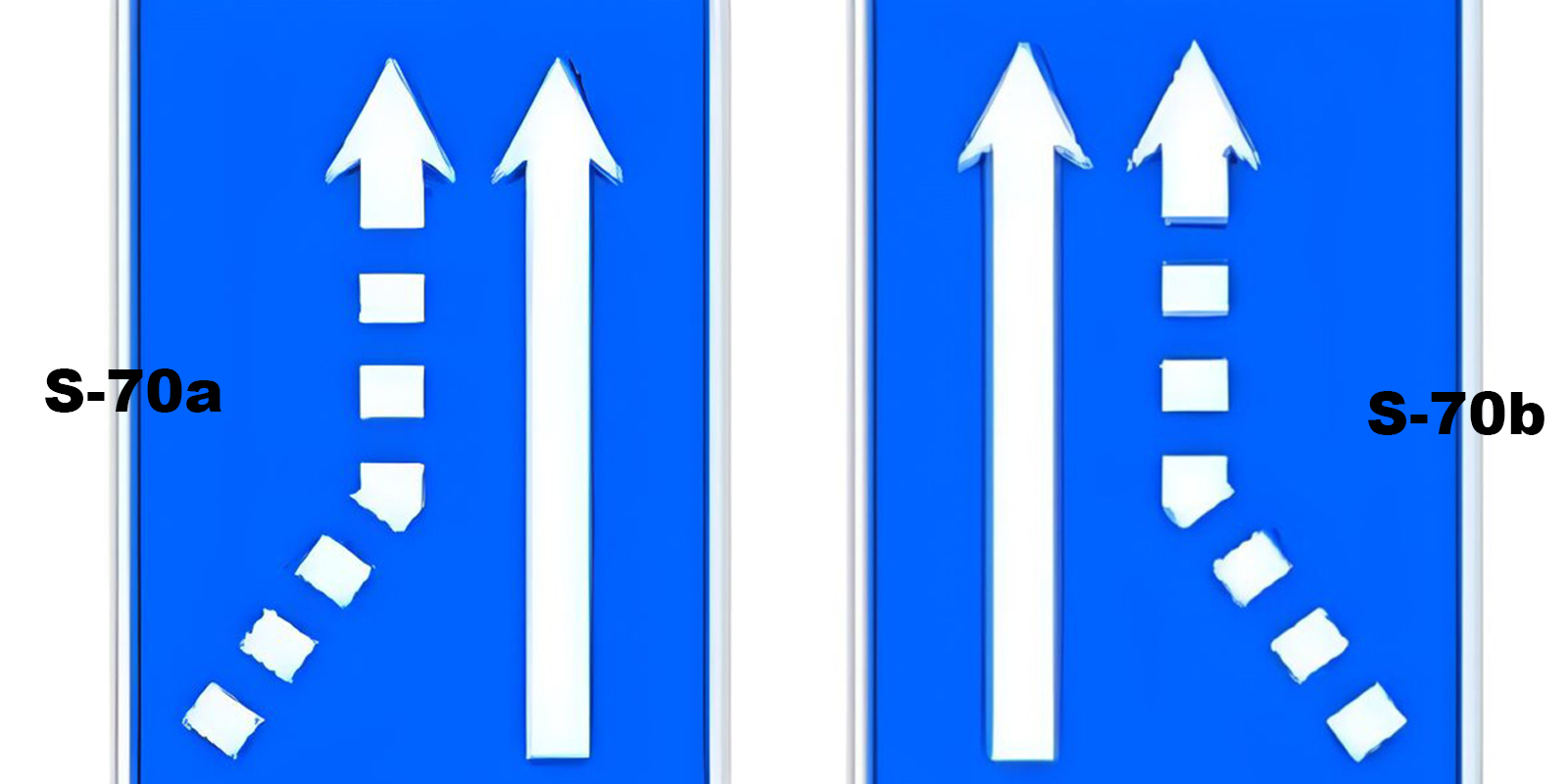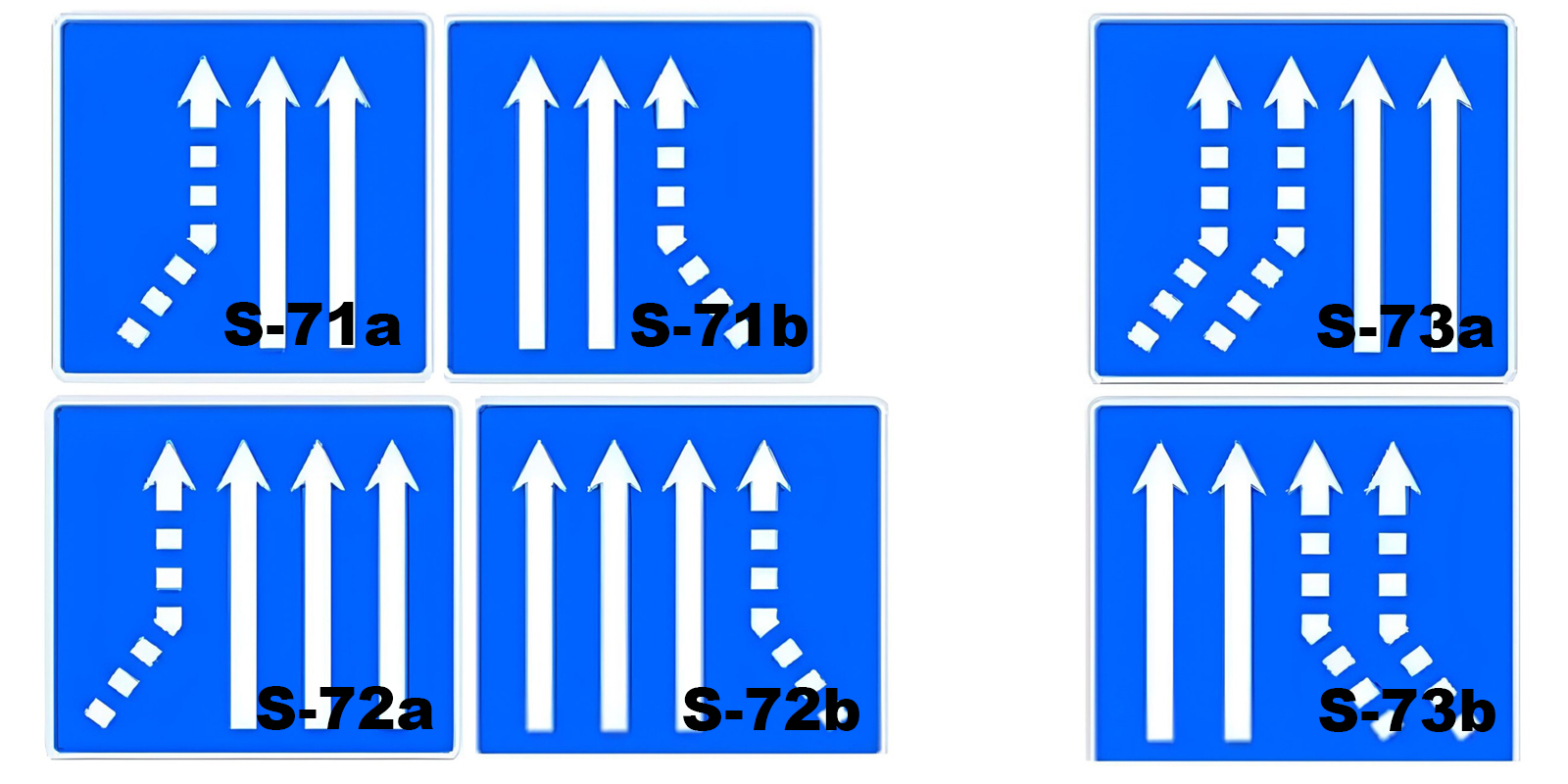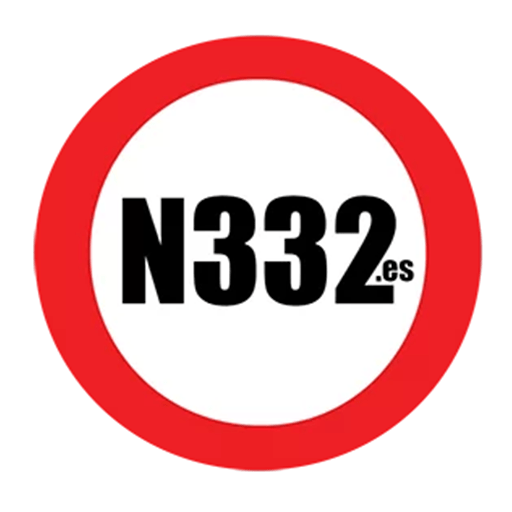We probably realise by now that road signs adapt and new versions are added occasionally, and although some new signs are more obvious than others, if we don’t keep ourselves aware of what the new signs mean, we can easily become confused by some of the less obvious variants, such as the new sign officially called the S-70 in the catalogue of road signs.

Contents
What does the S-70 road sign mean?
To understand the meaning of the S-70 sign, we will begin by explaining that it is part of the ‘Lane signs’ in the DGT’s Catalogue of vertical traffic signs. The ‘Lane signs’ are for indication and range from S-50 to S-99.
This DGT S-70 sign has a number of variants, the principles are S-70a and S-70b, as you can see in the image. The sign refers to traffic joining or merging onto an established road, from the left or right, respectively.
Specifically, the meaning of the S-70 is advising us of:
S-70a, merging of a lane on the left into a one-lane roadway: Indicates, on a roadway with one traffic lane, that a lane will merge on the left side.
S-70b: merging of a lane on the right into a one-lane roadway: Indicates, on a roadway with one traffic lane, that a lane will merge on the right side.
Therefore, the S-70 sign warns of the moment when two lanes are going to merge and become one.
What you should do if you see the S-70 sign
If you see the S-70, you should be careful and, having checked the road situation around you, prepare to adapt your speed and distance to other vehicles to prepare for the merge of the two lanes. Although vehicles on the main carriageway have priority, it is courteous to safely allow traffic to merge. It is also courteous to acknowledge and thank those drivers who offer this courtesy.
It is also important to check whether there are any additional signs to the S-70 sign and, above all, follow the road markings that will guide you before the lanes merge.
There are also other variants: the S-71, S-72 and S-73
This sign also has three other variants: S-71, S-72 and S-73. In turn, these three variants also have two others, thus we have: S-71a, S-71b, S-72a, S-72b, S-73a and S-73b.

The same principle applies to the S-70 with these variants, the only difference is the number of lanes on the main carriageway in the case od S-71 and S-72, two and three lanes, respectively, and the number of lanes joining in the case of S-73.
Discover more from N332.es - Driving In Spain
Subscribe to get the latest posts sent to your email.

You must be logged in to post a comment.